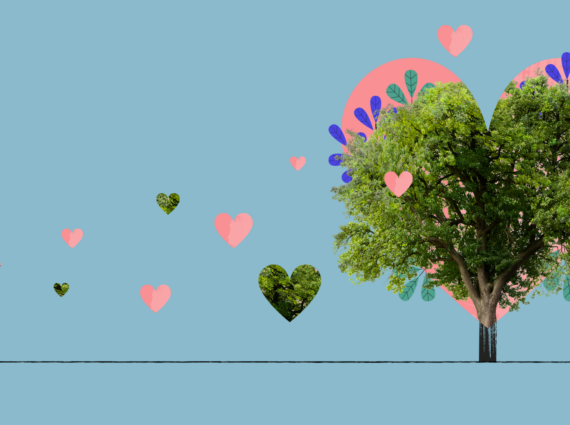Jungles, swamps, forests, meadows, coral reefs. Earth’s ecosystems seem to be stable at first glance (especially when humans do not interfere). However, not only urbanisation and pollution can put their future in question. Meadows are disappearing, and rivers are drying up for various reasons. In this changing world, what distinguishes strong ecosystems?
Biodiversity in the example of the Amazon rainforest
Biodiversity is often the answer to this question. Put in simple words: biodiversity is the variety of life forms. It consists of three main features: ecosystem diversity, species diversity, and genetic diversity within these species.
The first of these, ecosystem diversity, refers to the differences observed within and between ecosystems. Species diversity refers to the number of species present in an area and their abundance. On the other hand, genetic diversity is related to the observable differences between individuals of a given species. The greater the saturation of these traits, the greater the biodiversity.
Let’s arrange a short mind-travel and visit the Amazon rainforest, the most biodiverse region on the planet. This is where you can see the unique complexity of ecosystems, the mix of species and their genetic diversity. A tree provides fruit, leaves, and seeds for herbivores. A tapir, for example, will be tempted to spread its seeds through the forest, helping more plants grow. Insects will be interested in the leftovers from the tapir’s meal and help form fertile soil by breaking down and processing the nutrients. Plants will grow on them. For example, sprouting from seeds that our friend, the greedy tapir, will later bring back. And so on and so forth.
Ecosystems in the Amazon Forest are plentiful, and all species that live there are interconnected and play a specific role. When, in addition, genetic differences are evident within the different clusters, they (or at least the more resilient part) can cope better with any changes that come their way.
It is worth looking at biodiversity from a wider perspective. In a functioning ecosystem, organisms and ecological processes provide oxygen and clean water, support the carbon cycle, bind nutrients. They allow plants to grow, as well as control pests and diseases. They help to keep nature in balance. As if that were not enough, they also regulate the climate. That is why maintaining biodiversity is so important!
Biodiversity in Belize and Poland
The Amazon Forest ecosystem is so diverse and complex that the balance still has a good chance of holding if one species disappears. But not every environment is so resilient. After all, we all know what happens if bees are extinct.
We can support biodiversity in many ways. Let’s stop for a moment in Belize, where we are running the TerGo agroforestry project. Thanks to a holistic environmental approach, together with the local community, we are turning a wasteland into a polyculture forest. The basis for this was the special selection of plants and planning the planting so that it would be of the greatest use. A holistic approach to forest restoration and post-cultivation land regeneration has thus created a new ecosystem that not only sequesters CO2 but also supports biodiversity and the local community.
However, important initiatives that save ecosystems can also be found in Poland. The UNEP/GRID-Warsaw Centre has been working for sustainable development since 1991, implementing the United Nations Environment Programme (UNEP) goals. In June 2021, to mark the inauguration of the Decade of Ecosystem Restoration, they launched the Re:Generation programme. This campaign puts a spotlight on ecosystems. On the one hand, it focuses on educational activities and, on the other, on creating conditions for cooperation for the benefit of biodiversity of local governments, residents, and businesses. A special geoportal has been launched as part of the programme. The portal makes it easy to find initiatives protecting ecosystems throughout Poland. Everyone can also report or find ecosystems reported by someone else that require assistance. The geoportal also enables the visualisation of ongoing activities.
As the Re:Generation programme representatives indicate, the coming years will be crucial in restoring harmony in the relations between people and nature. They state that if 350 million hectares of destroyed water- and land-ecosystems are restored by 2030, we can count on the return to the circulation of ecosystem services valued at USD 9 trillion. Restoring ecosystems is also expected to remove between 13 and 26 gigatons of greenhouse gases from the atmosphere. These are huge numbers and a massive difference to the environment!
UNEP/GRID-Warsaw Centre and TerGo join eco-forces
These are goals that are very close to our hearts. That is why we are happy to announce the start of TerGo’s cooperation with the UNEP/GRID-Warsaw Centre! Our common goal is to protect and restore peatlands: vulnerable ecosystems, which occupy barely 3% of the Earth’s surface but store as much as 30% of the world’s carbon. They are also home to many unique plant and animal species. Thanks to their ability to keep water, they also prevent local flooding and droughts. Therefore, protecting and restoring peatlands is a solution that has a beneficial effect on climate protection and biodiversity!
From now on, the TerGo eco-package offer will be extended to include biodiversity support! You can add them to the purchase of your regular carbon offset plan. Thus, part of the funds from their sale will be donated to the UNEP/GRID-Warsaw Centre to implement and run peatland protection and restoration activities.
Become a Biodiversity Hero, join us and support biodiversity!





